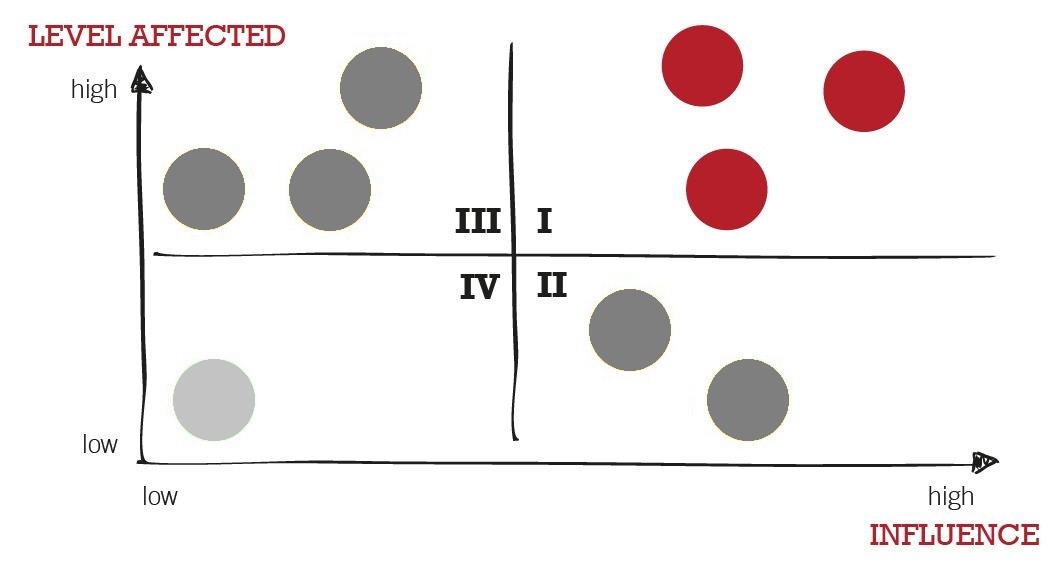Chapter 4 - Stakeholders¶
Part 2¶
Who has an impact on your project and why? - Make a stakeholder analysis!¶
Think about people, entities or anything else that is affected by or has an influence on your project. You need to consider if the level affected and the influence is high or low. Now all stakeholders can be classified in four quadrants.

After visualising all your stakeholders in this matrix, you must think about their specific interactions with the project and the according measures for the organisation of and communications to the stakeholders. This depends on the quadrant you've put them.
Quadrant I
It may be a good idea to make a person a member of the steering committee or project team.
Quadrant II
Get them closely involved in the project (e.g. as core project team members).
Quadrant III
It may be a good idea to make a person a member of the consultant panel or advisory board. Whatever their role in the project is, the people in this quadrant have to be regularly and proactively involved in the communication process.
Quadrant IV
It is often sufficient to provide summarised information on a situational basis.
A proper stakeholder analysis identifies all possible stakeholders and their needs within the project. Always keep in mind that your stakeholders can have a positive or negative impact on your project. So be careful in evaluating possible measures for involving them. In order to ensure a positive project flow, you should begin with the stakeholder analysis early - and don't stop actualising your matrix during your project! The communication is the be-all and end-all - so don't hesitate to fall back on project meetings and project reports.
Based on the stakeholder analysis you can make decisions concerning the organisational structure of the project and further communication within.
Elements of stakeholder communication¶
When communicating with stakeholders, the project team selects the intended methods from a catalogue of measures, which can among others include:
- Project meetings
- Project reports
- Project newsletters
- Project presentations
- Websites
- Events
How the story ends…¶
Everything is prepared and he's ready for the review, when suddenly John, the intern, comes in again. Dr. Rogers gives him an overview about his stakeholder analysis, when John asks: "I always thought a stakeholder analysis is the same as a risk analysis". Dr. Rogers who was in a hurry said: "Yes, this is a common fault. I need to go now, but to answer your question quickly - the difference lies in the costs. In a stakeholder analysis you just get to know possible problems, without any cost assessments. The risk analysis on the other hand expresses also costs which are linked to possible risks. We will talk about this when we have to deal with the risk analysis."
Dr. Rogers leaves his office and is now standing outside his development manager's office feeling slightly nervous. The door opens and a radiant David Bourges strides out to meet him. With a big smile, he announces that the review has been postponed. Bourges had received a very lucrative offer from another company and would be accepting it. He says that the new development manager Mr. Smith would contact him so that he can later present the review.